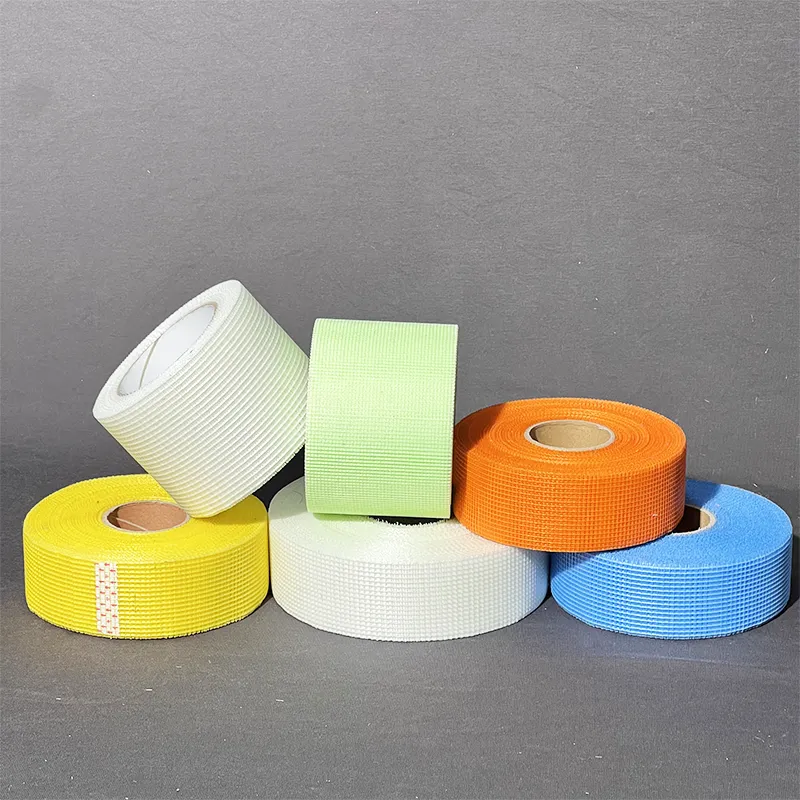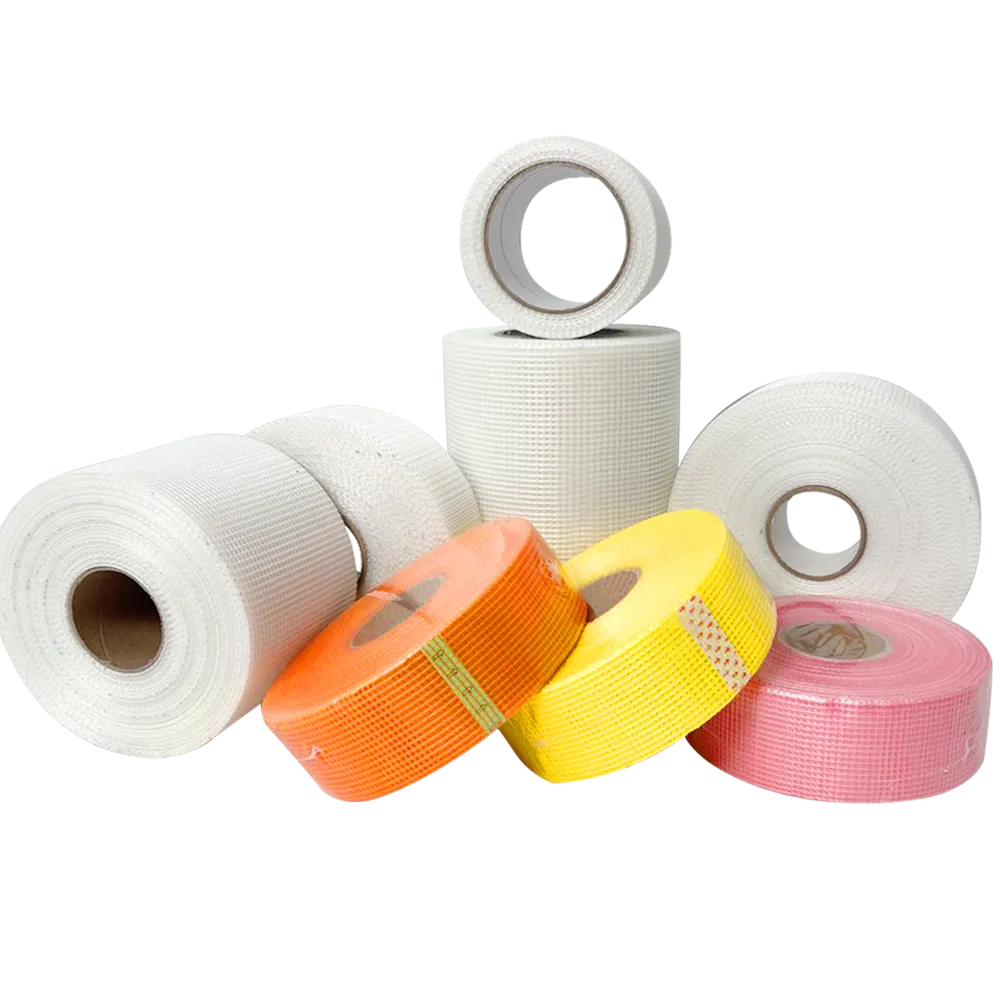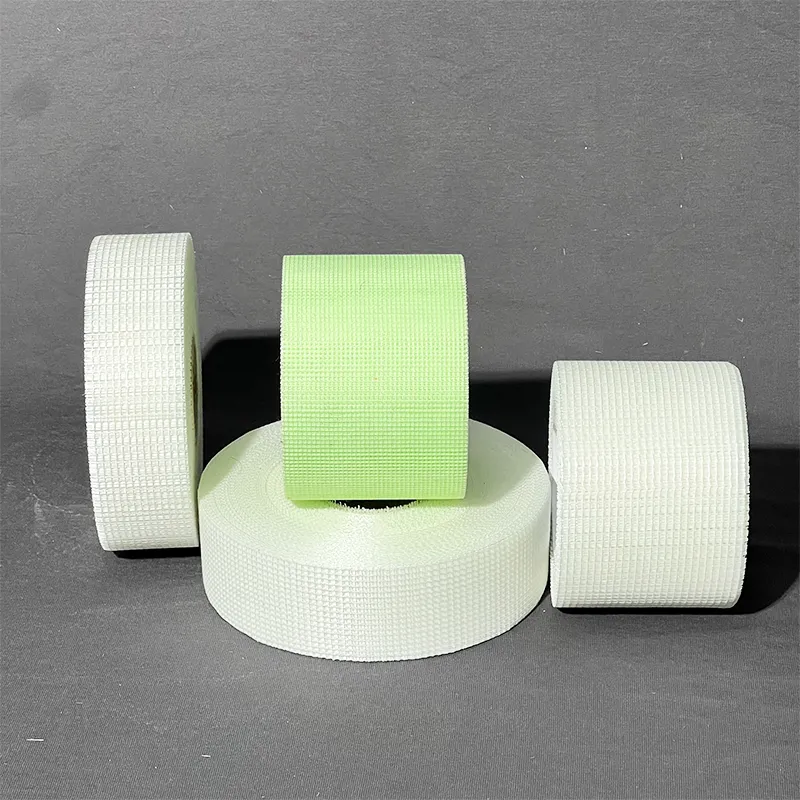Fiberglass mesh tape offers several advantages that make it an ideal choice for construction and repair projects. One of its primary benefits is its exceptional strength and durability, which provide superior reinforcement for seams and joints in various materials, including drywall and concrete. Unlike paper tape, fiberglass mesh resists tearing and damage, ensuring a long-lasting bond that can withstand shifting and settling. Additionally, the mesh design allows for better adhesion with joint compounds, reducing the likelihood of cracks and improving the overall finish. This versatility, combined with its lightweight nature and ease of application, makes fiberglass mesh tape a go-to solution.
Fiberglass Mesh Tape Uses
1. Fiberglass Mesh Tape for Drywall
Fiberglass mesh tape is widely used in drywall installations to reinforce joints and seams. Unlike traditional paper tape, fiberglass mesh offers superior strength and flexibility. Its open weave pattern allows for better adhesion with joint compound, reducing the risk of cracking and creating a smooth finish. By using fiberglass mesh tape for drywall, contractors can achieve long-lasting results that can withstand the test of time, making it a favorite among professionals.
2. Fiberglass Mesh Tape for Cement Board
When it comes to tiling installations in wet areas, using fiberglass mesh tape for cement boards is crucial. This tape is specifically designed to provide enhanced support between cement boards, preventing cracks and ensuring a seamless surface for tile application. Its waterproof properties create an effective barrier against moisture, which is vital for areas like bathrooms and kitchens. By incorporating fiberglass mesh tape, you can enhance the integrity of your cement board installations.
3. Fiberglass Mesh Tape for Waterproofing
In construction projects that require moisture control, fiberglass mesh tape for waterproofing is an excellent choice. This tape is designed to offer superior adhesion and durability, making it ideal for use in roofs, foundations, and other areas prone to water exposure. By using it in conjunction with waterproofing membranes, fiberglass mesh tape helps to create a long-lasting barrier against water infiltration, protecting structures from potential damage.
4. Fiberglass Mesh Tape for Plaster Repair
Repairing damaged plaster surfaces can be a challenging task, but using fiberglass mesh tape for plaster repair can simplify the process. This tape acts as a reinforcement layer, providing excellent adhesion to the existing plaster while preventing future cracks. Its lightweight and flexible nature allows it to conform to uneven surfaces, ensuring a smooth and even finish. Whether it’s a small repair or a larger restoration project, fiberglass mesh tape proves to be an invaluable asset in plaster applications.
5. Fiberglass Mesh Tape for Ducts
HVAC systems require proper sealing to function efficiently, and this is where fiberglass mesh tape for ducts comes into play. It is specifically designed for use in heating and cooling systems, providing a strong bond that withstands temperature fluctuations. By applying fiberglass mesh tape to duct seams, you can reduce air leaks, which can lead to energy savings and improved airflow. Its resistance to mold and moisture makes it an ideal choice for HVAC applications, ensuring contractor confidence and customer satisfaction.
Fiberglass Mesh Tape vs. Paper
Fiberglass Mesh Tape: The Durable Option
Fiberglass mesh tape is a popular choice among professionals and DIY enthusiasts alike. Its woven structure provides exceptional strength and resilience, making it ideal for high-stress areas. The tape is self-adhesive, simplifying the application process and eliminating the need for additional adhesives. This feature allows for quick repairs and ensures a strong bond when applied directly to joints.
Another significant advantage of fiberglass mesh tape is its resistance to mold and moisture. This makes it particularly suitable for areas prone to dampness, such as bathrooms or kitchens. Additionally, unlike paper tape, fiberglass mesh tape doesn't require a heavy layer of joint compound to prevent cracking—resulting in less material usage and quicker drying times.
Paper Tape: The Traditional Choice
On the other hand, paper tape has been a staple in drywall finishing for many years. It is known for its ability to create a seamless finish when applied properly. The process involves embedding the tape in joint compound, which provides a strong bond and a perfect base to blend with the surrounding drywall.
One downside to paper tape, however, is its vulnerability to moisture. In areas where humidity is a concern, paper tape can be susceptible to mold growth and deterioration over time. Furthermore, it requires more skill to apply effectively, as improper techniques can lead to bubbling or wrinkling.





